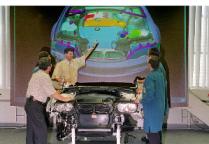Unit 1: The Reasons For Integration In Design
- Competitive Design,
- Externalisation and Outsourcing,
- Sustainable Design,
- Innovation by Design,
- Complexity
- Integrating the whole Life-Cycle
- Integrating the Stakeholders of the Life-Cycle
- Integrating the diff erent Stakeholder Cultures
- Concurrent Engineering
- Just-Need Approach
- Product Modeling
- Integration as a Means ot master Complexitty
- Functional Re-Use aware Design Principles
- Requirements Engineering
- Design Thinking for Innovation
- Innovating using TRIZ
- Formalisation of Knowledge
- Capitalisation on Knowledge
- Sharing of Knowledge
- Contextualisation of Knowledge
- Design Process Moderation
- Working in Distributed Engineeing Teams
- Communication with Experts from different Domains
- Integrated Risk Evaluation
- Integrated Safety Design in Automotive
- Integrated Design in Wood Furniture Industry
- Virtual Technologies to support Integration
- etc.




